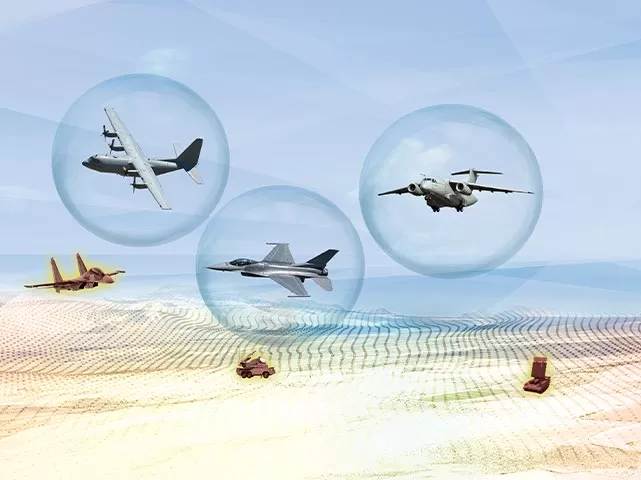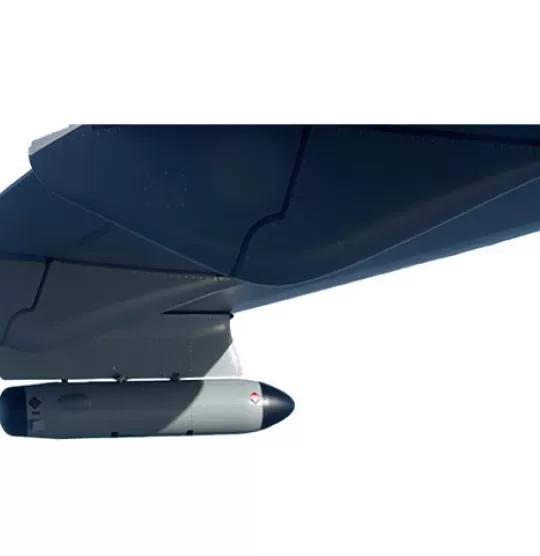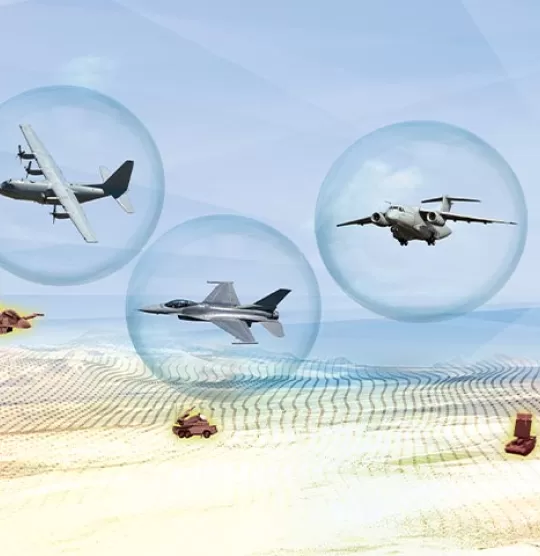
Outsmarting Enemy’s Sensors
From UAVs navigating hostile territories to fighter jets dodging advanced radar threats, Elbit Systems’ SPEAR ™ family empowers platforms to disrupt, and dominate the electromagnetic battlefield.
Warfare is no longer just about roaring engines or missile blasts – it’s also about controlling the airwaves. Unmanned aerial vehicles (UAVs), jet fighters, and even small tactical drones entering hostile territories face radar systems that can lock on from miles away, turning them into debris.
The question isn’t just how to fight back but also how to deceive – outthinking, outmaneuvering, and outsmarting the sensors hunting them, all while relaying crucial information back to headquarters.
This is where Elbit Systems’ innovative SPEAR family comes into play.
Versatile Solutions Across Platforms
Elbit Systems’ ISTAR & EW Division has spent years developing solutions tailored to these challenges. The SPEAR product line strives to meet the complex demands of platforms ranging from ultra-light drones to heavily armed fighter jets.
Designed with a modular approach, these systems balance size, weight, and power efficiency while maintaining high performance.
The demand for these innovations is originating from the battlefield. "In Yemen, multiple U.S. Air Force MQ-9 Reapers were brought down by aging but effective Russian-made air defense systems," says Natan, head of the UAS & Special Applications Business Unit in the division's Airborne Electronic Warfare line of business. "In Ukraine, drones on both sides face dense, overlapping air defense networks. Without advanced EW solutions, survival in these conditions becomes very challenging."
"We need to rethink how electronic warfare systems are built," he continues. "UAVs and drones demand lighter, smaller, and more efficient systems, especially when power is a meaningful constraint," he explains, highlighting the challenge of deploying complex EW systems on smaller platforms with limited space and power supply.
The SPEAR line includes systems tailored to meet specific operational needs while maintaining a unified technological foundation. The Light SPEAR, for example, is designed to protect medium-altitude long-endurance (MALE) UAVs like the Hermes 900. Weighing just over 20 kilograms, it incorporates advanced jamming technology to help shield drones from radar-guided threats.
For smaller platforms, Micro SPEAR offers a relatively compact yet powerful solution, weighing just 2 kilograms. This system equips tactical UAVs with offensive EW capabilities, enabling them to neutralize radar installations without being detected.
The Nano SPEAR, created for combat aircraft, delivers powerful RF disruption capabilities in a device weighing just 700 grams. Built with innovative components adapted from civilian telecommunications, it is intended for disposable, high-stakes missions. "It’s a product of necessity," says Natan. "Sometimes, even seconds of protection can make all the difference."
For aircrafts, the SPEAR EW pod provides remarkable versatility. Mounted on the wings, this 140-kilogram system adapts to any theater of operations by reconfiguring its modular components to cover a broad range of frequencies.
Beyond Jamming
SPEAR systems go beyond blocking enemy signals, delivering important real-time intelligence.
"The ability to detect and analyze threats is just as important as neutralizing them," explains Natan. "Our systems identify the type and source of an attack, relaying data to operators for to assist them with making informed, split-second decisions."
In a demonstration earlier this year in the U.S., Micro SPEAR units triangulated the position of an enemy radar by sharing and cross-referencing data – a meaningful capability for both offense and defense.
With growing global demand and active deployments, the SPEAR family marks a noteworthy advance in electronic warfare.
Nano SPEAR, the newest member of the lineup, debuted at the Paris Air Show last year and has already secured its first customer. "We’ve built these systems to excel also in challenging conditions," Natan concludes. "By blending military precision with civilian innovation, SPEAR is not just addressing today’s challenges – it could potentially help shape tomorrow’s battles."



